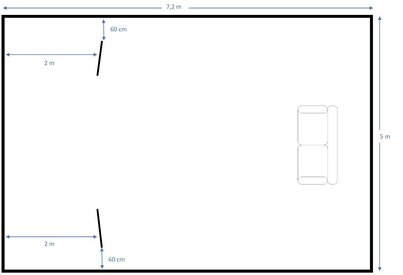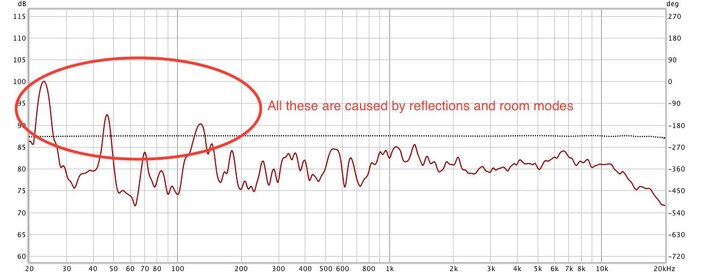JDortmans
Registered
Thread Starter
- Joined
- Jan 14, 2020
- Posts
- 3
More
- Preamp, Processor or Receiver
- audio research ls 26
- Main Amp
- Krell KSA 300S (low range)
- Additional Amp
- audio research VS115 (mid / high range)
- Other Amp
- Krell KSA 80B
- Universal / Blu-ray / CD Player
- Metrum Adagio DAC, Ambre streamer
- Streaming Subscriptions
- Transarent Audio Ultra interlinks / speaker cable
- Front Speakers
- Magnepan 20.1
- Center Channel Speaker
- Magnepan MGCC3
- Surround Speakers
- Magnepan 1.6
- Subwoofers
- Velodyne dd12
- Screen
- Wall with Screen Goo Goo 2.0 Reference White paint
- Video Display Device
- Benq W2700 4K beamer
Hello all,
I am new to this forum and I want to thank you in advance for your support.
Last year I did build a new house which has a basement underneath of 12 meter x 8 meter size.
One of the rooms in this basement is my new music listening room.
The inner dimensions of the room is 5 meter x 7,2 meter and 2,5 meter high.
The sealing is treated with acoustic spray (black paper glue mixture, Acosorb.com/acoustic-spraying) of 25 mm thick.
At the moment I am only using my 2 front speakers to listen in stereo.
Front speakers are Magnepan 20.1 in combination with a special Magnepan active filter for bi-amping them.
The power amps I use are a Krell KSA 300S for the low frequencies and a Audio Research VS 115 for mid and high frequencies.
I did some measurements with REW v5.19 using a Behringer ecm 8000 and Behringer U-Phoria UM2 USB audio interface.
Attached one of the mdat measurement files I created.
My question:
Although I only treated the sealing of the room the sound is already much better than expected in this concrete box.
The main problem is that in the low frequencies I miss some detail and at some frequencies the bass gets very loud for an moment.
I did some experiments with the position of the speakers (at the moment 2 meters from the back and 60 cm from the side).
I also changed my listening position by moving my couch backward towards about 1 meter from the back wall.
This resulted in a big improvement in resolution, detail and level of bass.
But still at some frequencies the bass is to loud and I miss detail.
Based on the measurement I done can you advise me how to improve the acoustics of my listening room?
I am new to this forum and I want to thank you in advance for your support.
Last year I did build a new house which has a basement underneath of 12 meter x 8 meter size.
One of the rooms in this basement is my new music listening room.
The inner dimensions of the room is 5 meter x 7,2 meter and 2,5 meter high.
The sealing is treated with acoustic spray (black paper glue mixture, Acosorb.com/acoustic-spraying) of 25 mm thick.
At the moment I am only using my 2 front speakers to listen in stereo.
Front speakers are Magnepan 20.1 in combination with a special Magnepan active filter for bi-amping them.
The power amps I use are a Krell KSA 300S for the low frequencies and a Audio Research VS 115 for mid and high frequencies.
I did some measurements with REW v5.19 using a Behringer ecm 8000 and Behringer U-Phoria UM2 USB audio interface.
Attached one of the mdat measurement files I created.
My question:
Although I only treated the sealing of the room the sound is already much better than expected in this concrete box.
The main problem is that in the low frequencies I miss some detail and at some frequencies the bass gets very loud for an moment.
I did some experiments with the position of the speakers (at the moment 2 meters from the back and 60 cm from the side).
I also changed my listening position by moving my couch backward towards about 1 meter from the back wall.
This resulted in a big improvement in resolution, detail and level of bass.
But still at some frequencies the bass is to loud and I miss detail.
Based on the measurement I done can you advise me how to improve the acoustics of my listening room?













